#DevOps-Principles
Explore tagged Tumblr posts
Text
What is the Goal of a DevOps Methodology? Key Objectives for Successful Software Delivery- OpsNexa!
Understand the primary goals of the DevOps methodology and how it aims to accelerate software development, improve collaboration, and automate manual processes. What is the Goal of a DevOps Methodology? Learn how DevOps enhances speed, quality, and scalability in software delivery while fostering a culture of continuous improvement and innovation.
0 notes
Text
Why Does DevOps Recommend Shift-Left Testing Principles?
In the fast-paced world of software development, delivering high-quality products quickly is the ultimate game. However, with the need for speedy delivery comes the risk of defects slipping through the cracks, which can be costly and time-consuming to fix later. This is where DevOps shift-left testing principles come into play.
By moving testing earlier in the development process, DevOps shift-left testing helps teams identify and resolve issues sooner, leading to faster releases and better overall product quality.
Read More: Why Does DevOps Recommend Shift-Left Testing Principles?
0 notes
Text
12-Factor App Methodology: Essential Web Development Best Practices for Modern Apps
Explore the 12-Factor App Methodology and uncover web development best practices that enhance scalability and maintainability. This comprehensive guide delves into 12-Factor App Principles, offering insights into effective software development methodologies and their impact on cloud-native applications.
#12-Factor App Methodology#Web Development Best Practices#12-Factor App Principles#Software Development Methodologies#Cloud-Native Applications#DevOps Practices
0 notes
Text
What is DevOps?
DevOps is a partnership between IT Operations and Development that enables automated and repeatable software development and deployment. The firm can provide software applications and services more quickly thanks to DevOps. The words “Development” and “Operations” are combined to make the full term “DevOps.”
1 note
·
View note
Text
Unlocking the Power of DevOps on Azure: A Comprehensive Guide
In today's rapidly evolving technological landscape, the adoption of DevOps practices has become imperative for organizations striving to deliver high-quality software at a faster pace. Microsoft Azure, with its robust suite of cloud services, provides an ideal platform for implementing and maximizing the benefits of DevOps. This comprehensive guide will walk you through the key components, best practices, and tools available on Azure to unlock the full potential of DevOps.
Azure Overview
Azure is Microsoft's cloud computing platform, providing a wide range of services to help organizations build, deploy, and manage applications. When combined with DevOps practices, Azure becomes a powerful tool for achieving continuous integration and continuous delivery (CI/CD)."In the world of continuous improvement, DevOps training in Hyderabad is the compass that guides your team towards efficiency and innovation."
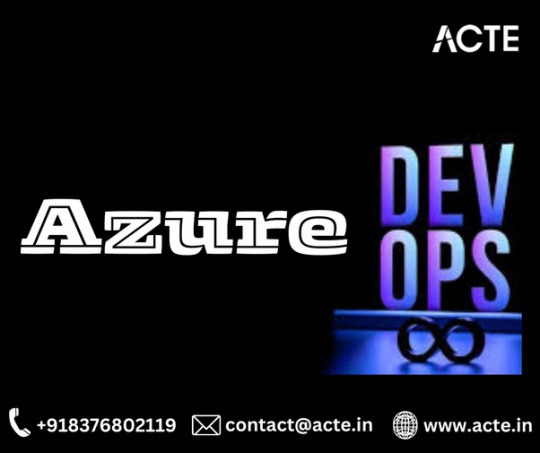
Integration with DevOps
Azure seamlessly integrates with popular DevOps tools and services, creating a robust ecosystem for application development. This integration ensures that development teams can leverage Azure's capabilities to streamline processes, automate tasks, and deliver software faster and more reliably.
Understanding DevOps on Azure
DevOps on Azure is a collaborative and streamlined approach to software development and IT operations, leveraging Microsoft's cloud computing platform, Azure. It combines the principles of DevOps with the robust features of Azure to enhance the entire development lifecycle.
1. Collaborative Development:
DevOps on Azure promotes collaboration between development and operations teams. It breaks down silos, fostering a culture where both teams work together seamlessly to achieve common goals.
2. Azure DevOps Services:
Azure offers a suite of tools known as Azure DevOps Services, covering version control, build automation, release management, and more. These services act as a central hub, providing a unified platform for efficient project planning, tracking, and execution.
3. Continuous Integration and Delivery (CI/CD):
Azure Pipelines, a key component, automates the build, test, and deployment processes, enabling teams to achieve continuous integration and continuous delivery. This results in faster and more reliable software releases.
4. Version Control with Azure Repos:
Azure Repos, integrated with Azure DevOps, provides robust version control supporting Git and TFVC. It ensures effective source code management and collaboration, crucial for a smooth development workflow.
5. Project Management with Azure Boards:
Azure Boards facilitates agile project management, allowing teams to plan sprints, track work progress, and manage backlogs. This ensures visibility and transparency throughout the development cycle.
"Break free from limitations. Our DevOps online course empowers you to upscale your skills, all from the comfort of your home."
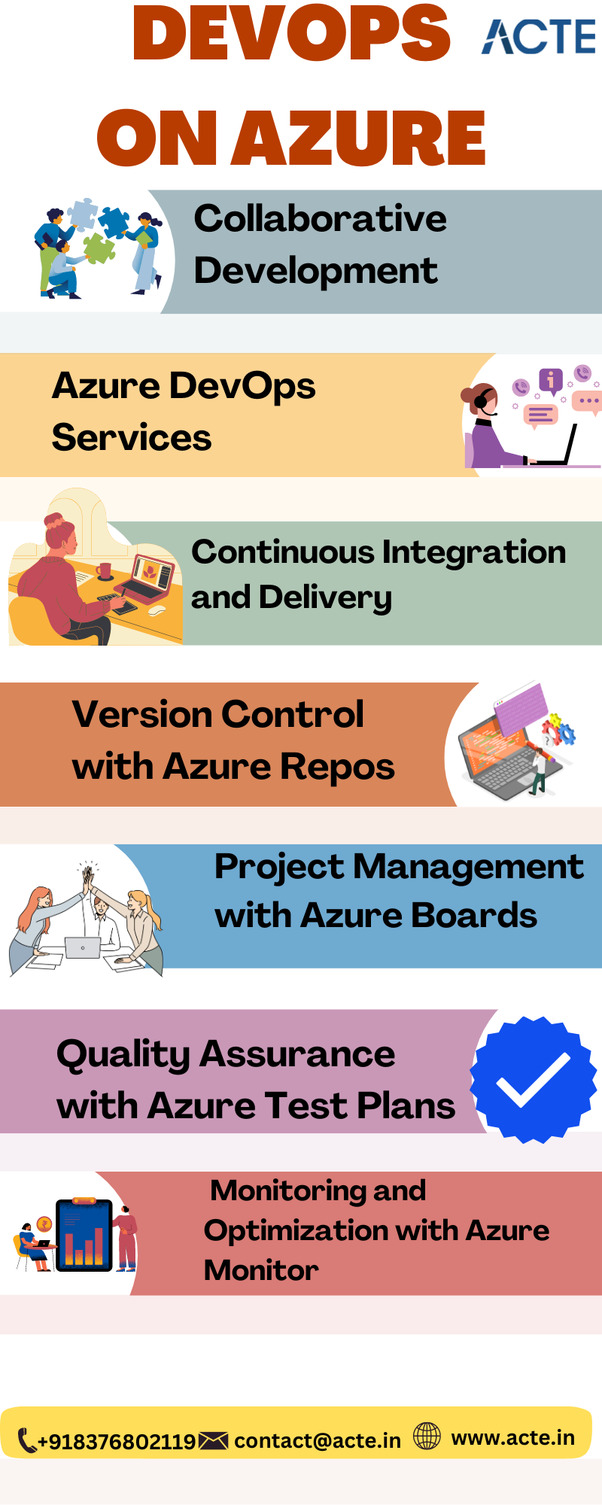
6. Quality Assurance with Azure Test Plans:
DevOps on Azure includes Azure Test Plans, a testing tool that assists teams in planning, tracking, and managing testing efforts. This ensures the quality and reliability of applications before deployment.
7. Monitoring and Optimization with Azure Monitor:
Azure Monitor provides comprehensive insights into the performance and health of applications and infrastructure. This monitoring solution allows proactive identification and resolution of issues, contributing to a more stable and reliable system.
Summarize the key takeaways from the guide, emphasizing the seamless integration of DevOps practices on Microsoft Azure. Encourage organizations to leverage the powerful combination of Azure's cloud services and DevOps principles to enhance agility, collaboration, and overall software delivery capabilities.
0 notes
Text
Understanding Agile and DevOps: Key Concepts and Principles
Together, Agile and DevOps drive digital transformation, helping organizations thrive in an era where adaptability and responsiveness are paramount. The successful fusion of Agile and DevOps promises a future where businesses can innovate rapidly, respond to market changes swiftly, and deliver value to customers continuously.
In the ever-evolving landscape of software development and IT operations, two methodologies have emerged as game-changers: Agile and DevOps. These approaches have not only transformed the way software is developed and delivered but have also become essential for businesses striving to stay competitive in the digital era. In this blog, we'll delve into the key concepts and principles that underpin Agile and DevOps, shedding light on why they are integral to the success of modern organizations, and explore how they are shaping the future of software development and IT operations.
Agile: A Paradigm Shift in Software Development

1. Iterative and Incremental Development
Agile embraces a flexible and iterative approach. Instead of trying to deliver the entire project at once, it divides the work into smaller, manageable increments. Each increment is developed in a time-boxed iteration, typically lasting 2-4 weeks, ensuring that working features are delivered consistently. 2. Customer Collaboration
Aile emphasizes close collaboration with customers and stakeholders. Their feedback is invaluable throughout the development process, enabling teams to adapt to changing requirements and deliver products that truly meet user needs.
3. Embracing Change
Change is inevitable in software development. Agile teams are adept at embracing change and adjusting their plans and priorities as new information emerges. This adaptability sets Agile apart from traditional, rigid project management approaches. 4. Self-Organizing Teams
Agile encourages self-organizing, cross-functional teams. Team members collectively decide how to complete their work, fostering a sense of ownership and accountability.
DevOps: Bridging the Gap Between Development and Operations
Collaboration: DevOps breaks down the silos between development and operations teams. It promotes collaboration, ensuring that both teams work together seamlessly to deliver software efficiently and with high quality.
Continuous Integration and Continuous Deployment (CI/CD): DevOps relies on CI/CD pipelines to automate the build, testing, and deployment of software. This automation accelerates the release process, reduces errors, and enhances product quality.
Infrastructure as Code (IaC): IaC treats infrastructure provisioning as code, allowing it to be versioned, automated, and managed just like software. This leads to faster, more reliable infrastructure deployment.
Monitoring and Feedback: DevOps puts a strong emphasis on monitoring software in production. By collecting and analyzing data, teams can identify and address issues promptly, ensuring optimal performance and reliability.
The Synergy of Agile and DevOps

Agile and DevOps are not isolated methodologies; they complement each other to create a harmonious approach to software development and delivery. Agile and DevOps are like a symphony orchestra where Agile sets the rhythm, and DevOps ensures harmonious execution.
Agile and DevOps: A Symbiotic Relationship
While Agile and DevOps have distinct focuses, they are highly complementary. Agile delivers the methodology for efficient development, while DevOps ensures the swift and reliable delivery of software into production. This partnership has been pivotal in helping organizations respond to market changes rapidly.
The Benefits of Embracing Agile and DevOps

Faster Time to Market: Agile and DevOps shorten development cycles, enabling businesses to deliver new features and products more quickly.
Speed and Efficiency: Agile and DevOps accelerate development and deployment, reducing time-to-market for products and features.
Quality Assurance: Continuous testing and automation in DevOps lead to improved software quality and reduced defects.
Improved Quality: Continuous testing and automation in DevOps result in higher software quality, reducing defects and enhancing user satisfaction.
Enhanced Collaboration: Agile and DevOps foster a culture of collaboration and transparency, aligning teams and stakeholders.
Risk Mitigation: Agile's adaptability and DevOps' monitoring capabilities help organizations mitigate risks and respond to challenges proactively.
In Conclusion
Understanding Agile and DevOps is not just about adopting methodologies; it's about embracing a cultural shift in how software is developed and delivered. The principles of Agile and DevOps promote flexibility, collaboration, and a relentless focus on delivering value to the customer. By incorporating these key concepts and principles, organizations can thrive in the fast-paced, technology-driven world we live in today. Together, Agile and DevOps drive digital transformation, helping organizations thrive in an era where adaptability and responsiveness are paramount. The successful fusion of Agile and DevOps promises a future where businesses can innovate rapidly, respond to market changes swiftly, and deliver value to customers continuously. To embark on this journey, organizations must embrace these key concepts and principles, championing a culture of collaboration, flexibility, and customer-centricity. Whether you're a software developer, a product manager, or a business leader, these methodologies offer the tools to succeed in a digital-first landscape.
Embrace the power of Agile and DevOps, where adaptability and collaboration meet efficiency and quality, shaping the future of software development in a digital world.
#agile methodology#scrum#agile practices#devops principles#continuous integration#continuous delivery
0 notes
Text
Unlock organizational success by harmonizing DataOps & DevOps—propel towards efficiency & innovation in a data-driven landscape.
#Software Development Consulting Company#Software Development Solutions Provider#DevOps Services Providers#DataOps vs DevOps#DevOps Methodology#DevOps Principles#DevOps and DataOps Integration#Digital Strategies
0 notes
Text
Unlock organizational success by harmonizing DataOps & DevOps—propel towards efficiency & innovation in a data-driven landscape.
#Software Development Consulting Company#Software Development Solutions Provider#DevOps Services Providers#DataOps vs DevOps#DevOps Methodology#DevOps Principles#DevOps and DataOps Integration#Digital Strategies
0 notes
Text
DataOps vs. DevOps: A Comparative Strategy Analysis - Powershow
Discover the power of merging DataOps & DevOps! Unlock efficiency and drive success through seamless collaboration. Dive into synergy-driven triumph today.
#Software Development Consulting Company#Software Development Solutions Provider#DevOps Services Providers#DataOps vs DevOps#DevOps Methodology#DevOps Principles#DevOps and DataOps Integration#Digital Strategies
0 notes
Text
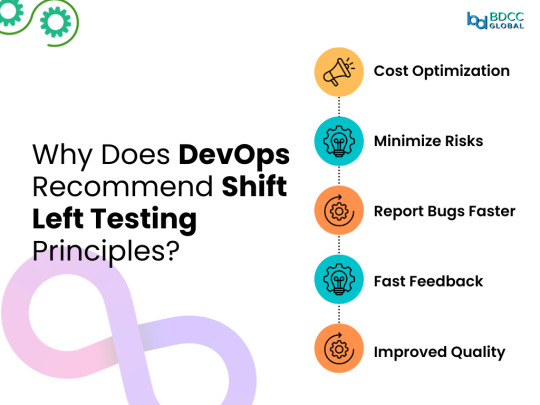
🔍 Shifting Left with DevOps: Discover why embracing early testing principles is a game-changer. Uncover the power of proactive quality assurance! 🚀🛠️
1 note
·
View note
Text
Introduction to SkillonIT Learning Hub- Empowering Rural Talent With World-Class IT Skills
SkillonIT provides IN-Demand IT courses, connecting Rural talent with rewarding IT skills through affordable, accessible and career-focused education. with Guaranteed pathways to internship and high paying jobs, start with us and step into Opportunities at top Tech-leading Companies. Skillonit Learning Hub, located in Buldhana, Maharashtra, is a leading institute dedicated to equipping individuals with cutting-edge technology skills. With a mission to bridge the digital divide, the institute provides high-quality education in various IT and professional development domains. Skillonit focuses on practical, industry-oriented training, ensuring students gain the expertise needed to thrive in today’s competitive job market. The hub is committed to empowering rural talent and shaping the next generation of skilled professionals.

Courses Offered Skillonit Learning Hub offers a diverse range of courses tailored to industry demands, enabling students to master both technical and professional skills.
Blockchain Development — Smart Contracts (Solidity, Rust, Web3.js, Hardhat) — Blockchain Protocols (Ethereum, Solana, Binance Smart Chain, Fantom) — Decentralized Applications (DApps) Development
Front-End Development — HTML, CSS, JavaScript — Frameworks: React.js, Vue.js, Angular — Responsive Web Design & UI Frameworks (Bootstrap, Tailwind CSS)
Back-End Development — Server-side Programming (Node.js, Python, PHP, Java, .NET) — Database Management (MySQL, MongoDB, Firebase, PostgreSQL) — API Development (RESTful APIs, GraphQL, WebSockets)
Full-Stack Development — Front-End + Back-End Integration — MERN Stack Development — Database, Deployment & DevOps Practice
Mobile App Development — Cross-Platform Development (Flutter, React Native)
Unity 3D Game Development — Game Mechanics & Physics — C# Programming for Game Development — Virtual Reality (VR) & Augmented Reality (AR) Integration
Professional UI/UX Design — User Interface Design (Adobe XD, Figma, Sketch) — User Experience Principles — Prototyping, Wireframing & Usability Testing
Professional Graphic Design — Adobe Photoshop, Illustrator, and CorelDraw — Branding & Logo Design — Digital Art & Visual Communication
Digital Marketing — SEO, SEM, and Social Media Marketing — Content Marketing & Copywriting — Google Ads, Facebook Ads & Analytics
Spoken English — Communication Skills & Public Speaking — Accent Training & Fluency Improvement
Personality Development — Business & Corporate Etiquette — Confidence Building & Interview Preparation — Leadership & Teamwork Skills
Location & Contact : Address : Chhatrapati Tower, Above Maratha Mahila Urban, 3rd Floor, Chikhali Road, Buldhana, Maharashtra, 443001.
Contact us
Conclusion : Skillonit Learning Hub is revolutionizing IT and professional education by making technology and essential career skills accessible to aspiring developers, designers, marketers, and professionals. With a strong emphasis on practical learning, industry exposure, and career opportunities, it stands as a beacon of growth for young talent in Buldhana and beyond. Whether you are looking to build a career in tech, marketing, design, or personal development, Skillonit provides the ideal platform to achieve your goals. Join Our Social Community
Skillonit #Education #ITCourses #Buldhana #Maharashtra #IT #Blockchain #Fullstack #Front-end #Back-end #MobileApp #Unity3d #UIUX #Graphicdesign #Digitalmarketing #SpokenEnglish #Personality #development
2 notes
·
View notes
Text
Top 6 Remote High Paying Jobs in IT You Can Do From Home
Technology has changed the scenario of workplaces and brought new opportunities for IT professionals erasing previous boundaries. Today, people are searching for both flexibility and, of course, better pay, which has made many look for remote well-paid jobs, especially in information technology field.
Advancements in technology have made remote work a reality for a growing number of IT specialists. Here, we will look into six specific remote high-paying IT jobs you can pursue from the comfort of your home:
Software Developer
Software developers are the architects of the digital world, designing, developing, and maintaining the software applications that power our lives. They work closely with clients, project managers, and other team members to translate concepts into functional and efficient software solutions.
In demand skills include proficiency in programming languages like Java, Python, Ruby, or JavaScript, knowledge of frameworks like React or Angular, and a strong foundation in problem-solving and communication. Platforms like Guruface can help you learn the coding skills to land a software developer job budget-friendly.
The average salary for a remote software developer is highly competitive, ranging from $65,000 to $325,000 according to recent data.
Data Scientist
Data scientists are the detectives of the digital age. They use their expertise in data analysis to uncover valuable insights and trends from large datasets, informing business decisions and driving growth.
To excel in this role, you'll need strong programming skills in languages like Python, R, and SQL, a solid understanding of statistical analysis and machine learning, and the ability to communicate complex findings effectively. Guruface is one of the leading online learning platforms that provides affordable data science courses.
The average salary for a remote Data Scientist is $154,932, with top earners exceeding $183,000.
Cloud Architect
Cloud architects are the masterminds behind an organization's cloud computing strategy. They design, plan, and manage a company's cloud infrastructure, ensuring scalability, security, and cost-effectiveness.
Cloud architects must be well-versed in cloud computing technologies from various providers like Amazon Web Services (AWS), Microsoft Azure, and Google Cloud Platform. In addition, proficiency in architectural design, infrastructure as code (IaC), and security compliance is essential. If you're interested in becoming a cloud architect, Guruface offers courses that can equip you with the necessary skills. Their cloud architect training programs can help you gain proficiency in cloud technologies from industry leaders like AWS, Microsoft Azure, and Google Cloud Platform.
The average salary for a cloud architect in the US is $128,418, with senior cloud architects earning upwards of $167,000 annually.
DevOps Engineer
DevOps engineers bridge the gap between IT and software development, streamlining the software development lifecycle. They leverage automation tools and methodologies to optimize production processes and reduce complexity.
A successful DevOps engineer requires expertise in tools like Puppet, Ansible, and Chef, experience building and maintaining CI/CD pipelines, and a strong foundation in scripting languages like Python and Shell. Guruface offers DevOps training courses that can equip you with these essential skills. Their programs can help you learn the principles and practices of DevOps, giving you the knowledge to automate tasks, build efficient CI/CD pipelines, and select the right tools for the job.
The average salary for a remote DevOps Engineer is $154,333, and the salary range typically falls between $73,000 and $125,000.
AI/Machine Learning Engineer
AI/Machine Learning Engineers are the builders of intelligent systems. They utilize data to program and test machine learning algorithms, creating models that automate tasks and forecast business trends.
In-depth knowledge of machine learning, deep learning, and natural language processing is crucial for this role, along with proficiency in programming languages like Python and R programming and familiarity with frameworks like TensorFlow and PyTorch.
The average machine learning engineer salary in the US is $166,000 annually, ranging from $126,000 to $221,000.
Information Security Analyst
Information security analysts are the guardians of an organization's digital assets. They work to identify vulnerabilities, protect data from cyberattacks, and respond to security incidents.
A cybersecurity analyst's skillset encompasses technical expertise in network security, risk assessment, and incident response, coupled with strong communication and collaboration abilities.
The average salary for an Information Security Analyst in the United States is $77,490, with a salary range of $57,000 to $106,000.
If you're looking to become a digital guardian, Guruface offers cybersecurity courses that can equip you with the necessary skills. Their programs can teach you to identify vulnerabilities in an organization's network, develop strategies to protect data from cyberattacks, and effectively respond to security incidents. By honing both technical expertise and soft skills like communication and collaboration, Guruface's courses can prepare you to thrive in the in-demand cybersecurity job market.
Conclusion
The rapid evolution of the IT sector presents an opportunity for professionals to engage remotely in high-paying jobs that not only offer high earnings but also contribute significantly to technological advancement. Through this exploration of roles such as Software Developers, Data Scientists, Cloud Architects, DevOps Engineers, AI/Machine Learning Engineers, and Information Security Analysts, we've uncovered the essential skills, career opportunities, and the vital role of continuous education via online platforms like Guruface in improving these career paths.
Forget stuffy textbooks – Guruface's online courses are all about the latest IT skills, making you a tech rockstar in the eyes of recruiters. Upskill from coding newbie to cybersecurity guru, all on your schedule and without a dent in your wallet.
1 note
·
View note
Text
Unveiling the Inner Workings of DevOps
DevOps, short for Development and Operations, is a revolutionary approach that has reshaped the landscape of software development and IT operations. In this blog post, we will delve into the core concepts, principles, and practices that constitute the inner workings of DevOps. By understanding the essence of DevOps, organizations can foster collaboration, streamline workflows, and accelerate the delivery of high-quality software.
"DevOps training in Hyderabad: Transforming silos into bridges for enhanced communication and collaboration."
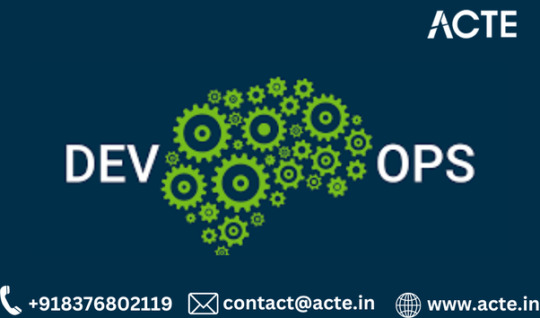
How Does DevOps Work?
DevOps is like the conductor of an orchestra, ensuring all the different elements in software development play together harmoniously. Let's break down how it works:
1. Collaboration is Key
DevOps works by fostering a collaborative culture between development and operations teams. The traditional barriers are dismantled, promoting seamless communication, and shared responsibilities.
Example: Imagine developers and operations teams as two puzzle pieces. DevOps brings them together, creating a complete picture.
2. Automation for Efficiency
DevOps leverages automation to handle repetitive tasks in the software development lifecycle. This includes testing, deployment, and integration, reducing manual effort and enhancing efficiency.
Example: Think of automated tests as your spell-checker. It catches errors before they reach the final document (your application).
3. Continuous Integration (CI)
Through CI, DevOps ensures frequent integration of code changes into a shared repository. This practice allows for the early detection of issues, enabling teams to work cohesively.
"The power of DevOps at your fingertips: Our DevOps online course brings industry expertise to your screen, making mastery just a click away."
Example: CI is like making updates to a shared Google Doc. Everyone sees changes in real time, avoiding conflicting versions.
4. Continuous Deployment (CD)
Building on CI, DevOps incorporates CD, automating the release process. This facilitates a continuous and reliable flow of updates, making deployments smoother and more predictable.
Example: CD is akin to a chef serving a dish immediately after preparing it, ensuring continuous updates.
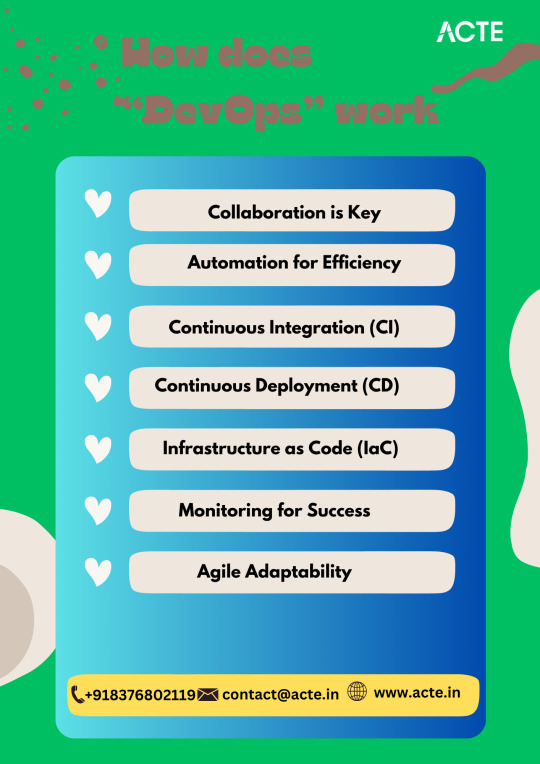
5. Infrastructure as Code (IaC)
DevOps treats infrastructure as code, managing servers, networks, and databases through code. This approach ensures consistency, scalability, and easy replication of environments.
Example: Treating your infrastructure as code is like having a recipe for your server setup—easy to replicate, consistent every time.
6. Monitoring for Success
DevOps emphasizes continuous monitoring of application performance. This ongoing feedback loop helps teams identify and address issues promptly, contributing to continuous improvement.
Example: Monitoring is like having a fitness tracker for your application. It alerts you when things are off, ensuring optimal health.
7. Agile Adaptability
Aligned with Agile principles, DevOps embraces change and flexibility in software development. The iterative nature of Agile methodologies ensures adaptability to evolving requirements.
Example: DevOps embraces change like a GPS recalculating your route. It ensures you reach your destination despite unexpected detours.
DevOps is a transformative approach that goes beyond tools and technologies, emphasizing collaboration, automation, and continuous improvement. By adopting DevOps principles and practices, organizations can enhance their ability to deliver high-quality software at a faster pace, ultimately meeting the demands of today's dynamic and competitive business landscape. As we continue to unveil the inner workings of DevOps, it becomes clear that it is not just a methodology; it's a culture that empowers teams to innovate and thrive in the ever-evolving world of technology.
0 notes
Text
The Roadmap to Full Stack Developer Proficiency: A Comprehensive Guide
Embarking on the journey to becoming a full stack developer is an exhilarating endeavor filled with growth and challenges. Whether you're taking your first steps or seeking to elevate your skills, understanding the path ahead is crucial. In this detailed roadmap, we'll outline the stages of mastering full stack development, exploring essential milestones, competencies, and strategies to guide you through this enriching career journey.

Beginning the Journey: Novice Phase (0-6 Months)
As a novice, you're entering the realm of programming with a fresh perspective and eagerness to learn. This initial phase sets the groundwork for your progression as a full stack developer.
Grasping Programming Fundamentals:
Your journey commences with grasping the foundational elements of programming languages like HTML, CSS, and JavaScript. These are the cornerstone of web development and are essential for crafting dynamic and interactive web applications.
Familiarizing with Basic Data Structures and Algorithms:
To develop proficiency in programming, understanding fundamental data structures such as arrays, objects, and linked lists, along with algorithms like sorting and searching, is imperative. These concepts form the backbone of problem-solving in software development.
Exploring Essential Web Development Concepts:
During this phase, you'll delve into crucial web development concepts like client-server architecture, HTTP protocol, and the Document Object Model (DOM). Acquiring insights into the underlying mechanisms of web applications lays a strong foundation for tackling more intricate projects.
Advancing Forward: Intermediate Stage (6 Months - 2 Years)
As you progress beyond the basics, you'll transition into the intermediate stage, where you'll deepen your understanding and skills across various facets of full stack development.
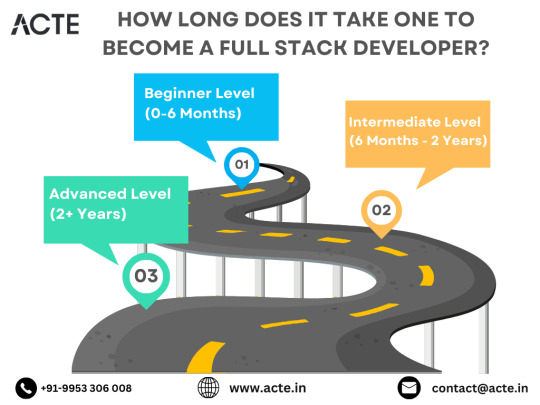
Venturing into Backend Development:
In the intermediate stage, you'll venture into backend development, honing your proficiency in server-side languages like Node.js, Python, or Java. Here, you'll learn to construct robust server-side applications, manage data storage and retrieval, and implement authentication and authorization mechanisms.
Mastering Database Management:
A pivotal aspect of backend development is comprehending databases. You'll delve into relational databases like MySQL and PostgreSQL, as well as NoSQL databases like MongoDB. Proficiency in database management systems and design principles enables the creation of scalable and efficient applications.
Exploring Frontend Frameworks and Libraries:
In addition to backend development, you'll deepen your expertise in frontend technologies. You'll explore prominent frameworks and libraries such as React, Angular, or Vue.js, streamlining the creation of interactive and responsive user interfaces.
Learning Version Control with Git:
Version control is indispensable for collaborative software development. During this phase, you'll familiarize yourself with Git, a distributed version control system, to manage your codebase, track changes, and collaborate effectively with fellow developers.
Achieving Mastery: Advanced Phase (2+ Years)
As you ascend in your journey, you'll enter the advanced phase of full stack development, where you'll refine your skills, tackle intricate challenges, and delve into specialized domains of interest.
Designing Scalable Systems:
In the advanced stage, focus shifts to designing scalable systems capable of managing substantial volumes of traffic and data. You'll explore design patterns, scalability methodologies, and cloud computing platforms like AWS, Azure, or Google Cloud.
Embracing DevOps Practices:
DevOps practices play a pivotal role in contemporary software development. You'll delve into continuous integration and continuous deployment (CI/CD) pipelines, infrastructure as code (IaC), and containerization technologies such as Docker and Kubernetes.
Specializing in Niche Areas:
With experience, you may opt to specialize in specific domains of full stack development, whether it's frontend or backend development, mobile app development, or DevOps. Specialization enables you to deepen your expertise and pursue career avenues aligned with your passions and strengths.
Conclusion:
Becoming a proficient full stack developer is a transformative journey that demands dedication, resilience, and perpetual learning. By following the roadmap outlined in this guide and maintaining a curious and adaptable mindset, you'll navigate the complexities and opportunities inherent in the realm of full stack development. Remember, mastery isn't merely about acquiring technical skills but also about fostering collaboration, embracing innovation, and contributing meaningfully to the ever-evolving landscape of technology.
#full stack developer#education#information#full stack web development#front end development#frameworks#web development#backend#full stack developer course#technology
10 notes
·
View notes
Text
Unlocking success: Merge DataOps & DevOps for unparalleled efficiency & innovation in a data-driven world. Optimize processes now!
#Software Development Consulting Company#Software Development Solutions Provider#DevOps Services Providers#DataOps vs DevOps#DevOps Methodology#DevOps Principles#DevOps and DataOps Integration#Digital Strategies
0 notes
Text
Unlocking success: Merge DataOps & DevOps for unparalleled efficiency & innovation in a data-driven world. Optimize processes now!
#Software Development Consulting Company#Software Development Solutions Provider#DevOps Services Providers#DataOps vs DevOps#DevOps Methodology#DevOps Principles#DevOps and DataOps Integration#Digital Strategies
0 notes